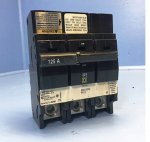electrofelon
Senior Member
- Location
- Cherry Valley NY, Seattle, WA
- Occupation
- Electrician
Two pole MCCB's go up to 125A. How come three pole stops at 100? What is the reason? Note I am referring to standard size breakers, I am aware there are special frame breakers that take up multiple spaces per pole.

